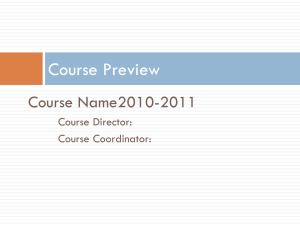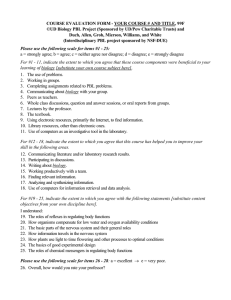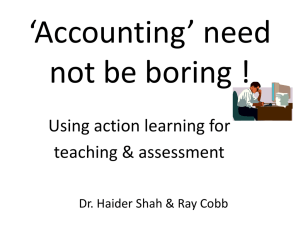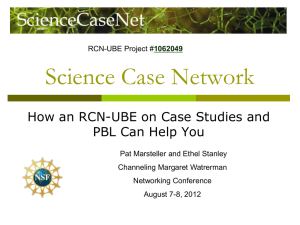Human Biology: The Nervous System
advertisement
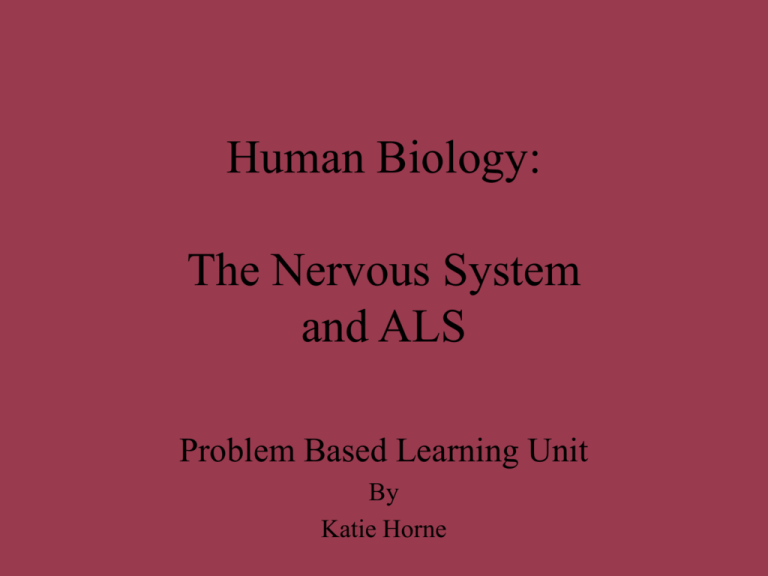
Human Biology: The Nervous System and ALS Problem Based Learning Unit By Katie Horne Review of Research (1) Learning in a PBL format may initially reduce levels of learning but may foster, over periods up to several years, increased retention of knowledge (2) PBL curricula may enhance both transfer of concepts to new problems and integration of basic science concepts into clinical problems (3) PBL enhances intrinsic interest in the subject matter (4) PBL appears to enhance self-directed learning skills (metacognition), and this enhancement may be maintained (Norman & Schmidt). Problem-Based Learning: Step 1: Present “The Hook” Step 2: Build a Chart Step 3: State your hypothesis Step 4: Research Step 5: Repeat the Process Step 6: Presentation of Solution Instructor's Learning Objectives Students will learn about: – The Structure and Function of a Neuron and the Neuromuscular Junction – Reflexes – MRI and electromyography – Amyotrophic Lateral Sclerosis: • • • • • Symptoms Physiology Prognosis Treatment options Emotional aspects Step 1: Present “the Hook” Give students enough information to get them interested in the scenario. Case Study: John Woodbury Case Presentation John is 44 years old. He is sitting in the chair in the examination room. As he moves to the table, he stumbles on the carpet, laughs at himself and says that happens all the time. John has enjoyed a relatively healthy life with no major illnesses. He is happily married with four children, ages 14, 11, 8, and 5. You ask what prompted his visit. John responds, “I was out sailing and noticed I couldn’t hold onto the ropes as tightly as was needed. I’ve noticed a pattern of general weakness—legs, arm, hands, even my jaw—sneaking up on me lately and I thought I should check it out.” Step 2: Build a Chart What We Know What We Think We Know What We Need To Find Out How to Use the Chart • What We Know: – List any facts presented in the case. • What We Think We Know: – List anything, especially based in prior knowledge that is questionable. • What We Need to Find Out: – Research topics to prepare for the next part. Step 3: State your hypothesis Commit to an interpretation of the available data. Note: The hypothesis is the consensus of the group and is simply a work in progress. Throughout the course of the PBL, this hypothesis will evolve. Step 4: Research Students should have a list of things they “want to find out.” In addition, there are directed questions for each section. Directed questions for part 1: 1. What are the major systems of the body? 2. What systems seem to be affected in John’s case? 3. What are the cell types specific to these systems? Draw and label the cells and describe their function. 4. List several possible conditions John could be suffering from. Step 5: Repeat the Process New information will be provided regarding the case. Therefore, for each part: • Create a new chart: What do we know? What do we think we know? What do we want to find out? • Commit to a new, revised hypothesis • Research answers for directed questions. Presentation of Solution Skit Poster Presentation A Creative Writing Assignment: An entry in John’s diary Other????








